Ancient Encounters
Dasaswamedh Ghat Varanasi
Mother Masala Tours
Evening on the Sacred Ganges
Dasaswamedh Ghat Varanasi. One of the most significant Ghats on the Ganges River, we will indulge in the unforgettable experience of viewing the evening aarti from a wooden boat. Dasaswamedh Ghat translates to "the ghat of the ten horse sacrifices" and is steeped in rich history and cultural reverence. This location has been a center of Hindu spirituality for centuries, attracting countless pilgrims and believers. The history of this Ghat traces back to the 18th century when it was renovated and enhanced by the Maratha rulers, especially during the reign of Peshwa Balaji Baji Rao, who rebuilt many of the ghats as a dedication to Shiva.
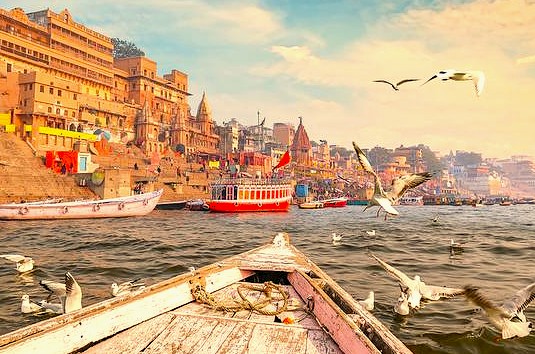
Dasaswamedh Ghat Varanasi: Waters of Ten Sacrifices
According to ancient Hindu legend, this sacred site earned its name when Brahma performed ten Ashvamedha yajñas - horse sacrifices, here to create an auspicious welcome for Shiva. In this prestigious Vedic ritual, a consecrated horse was sent to roam freely for a year; afterward, it was ceremonially returned to be ritually sacrificed as an offering to the gods. The horse was typically killed humanely with a specially consecrated sword or knife, following strict rituals, symbolizing royal authority and cosmic renewal. Renovated in the 18th century by Maratha rulers, Dashashwamedh Ghat remains a powerful pilgrimage site famed for its nightly aarti and spiritual energy.
Sacred Spaces
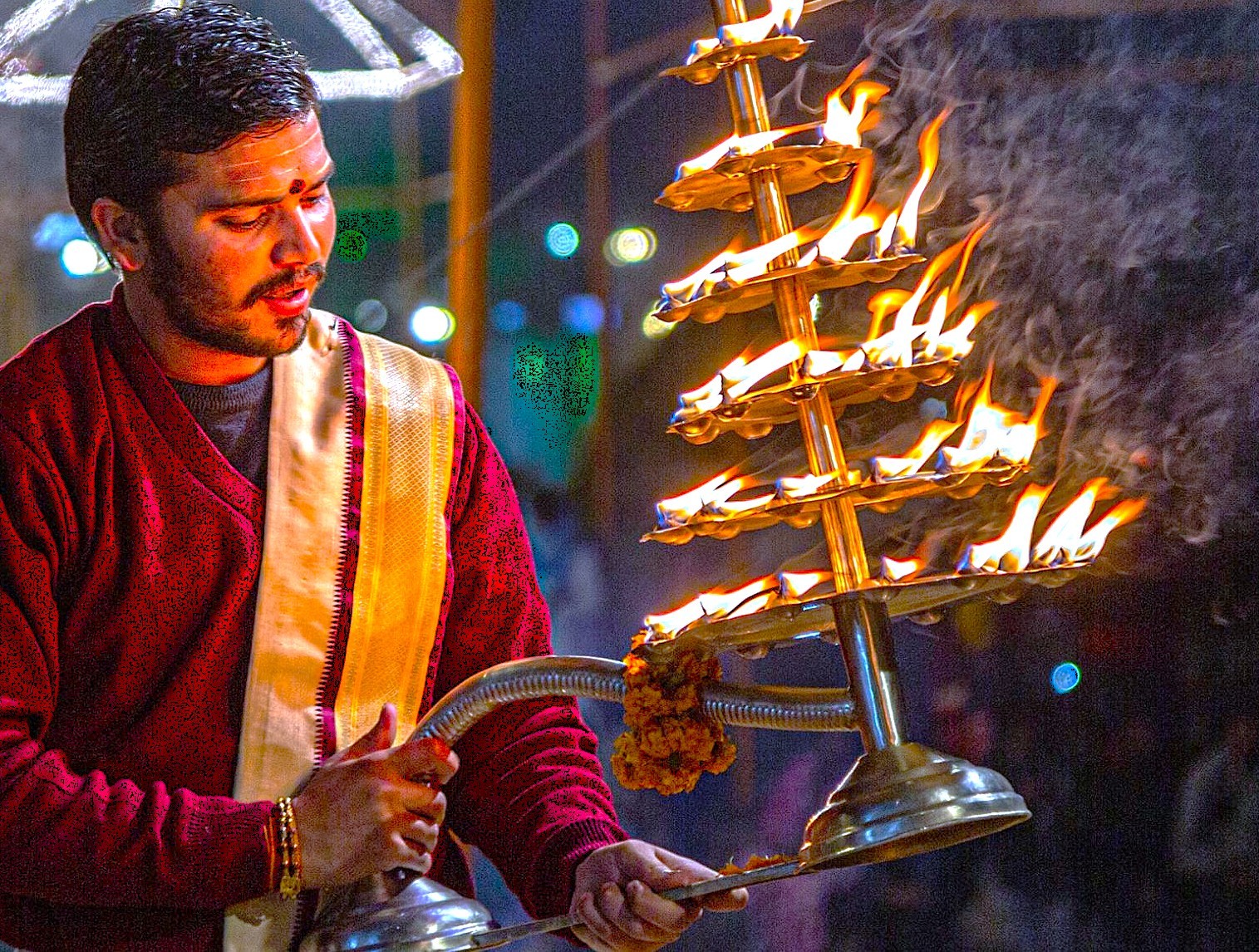
As we glide through the waters in our wooden boat, the anticipation builds for the evening aarti ceremony that begins shortly after sunset. This ritual features the ritualistic lighting of large oil lamps and the chanting of hymns, creating an atmosphere filled with devotion and spirituality. The evening aarti, a spectacular ceremony, occurs daily and lasts about 45 minutes, gathering locals and pilgrims alike, all mesmerized by the sight of flickering flames against the backdrop of the Ganges. As we enjoy this serene setting, the experience is not just sightseeing; it's an immersion into the profound cultural heritage that defines this sacred space.
Timeless Artifacts
The environment is filled with artifacts that encapsulate the essence of Hindu devotion. The primary feature is the Ganges River itself, revered as Ma Ganga (Mother Ganges) by millions. Numerous smaller shrines and idols are peppered throughout the ghat, each integral to the daily rituals performed by devotees. Notably, the area is colloquially known for the numerous Shiva Lingas installed at different points, each representing Shiva in his many forms. These sacred spaces prompt numerous rituals, including bathing and making offerings, which are viewed as essential acts of devotion.
Ancient Mosaics: Impeccable Craftsmanship

The craftsmanship seen at the Ghat tells a story of cultural resilience and artistic expression. Much of the stonework surrounding the ghat includes intricate carvings that date back to its restoration in the mid-18th century. Artisans from this period carefully built steps and platforms designed to facilitate easy access for pilgrims. Among the most noteworthy features are the brass lamps used during the evening aarti. These beautifully crafted items are shaped by skilled local crafters, whose techniques have been perfected over generations, reflecting the artistry associated with such ceremonial practices.
The Pulse of the Local Community
Dasaswamedh Ghat Varanasi. Home to a community deeply rooted in hospitality and spirituality. The locals embody a genuine spirit of welcome, engaging openly with pilgrims and tourists who come to experience the sacred atmosphere. The residents understand the importance of maintaining their culture and show pride in the traditions that have been passed down for generations. Their commitment to preserving rituals associated with the ghat ensures that the essence of spirituality remains intact while allowing us to immerse ourselves in their customs.
Capturing the Magic: A Photographic Haven

The breathtaking views at the Ghat provide a perfect backdrop for photography. Every corner offers a new perspective, a story waiting to be captured through your lens. As we prepare to witness the evening aarti, the scene unfolds with unique elements that define this sacred space. We will see the intricate steps leading down to the Ganges, busy with pilgrims and visitors from around the globe. Notice the flickering lights of the brass lamps being readied for the grand ceremony ahead. The air fills with a hum of conversations and the distant sound of temple bells.
A Culinary Journey: Savor the Flavour
As we explore the streets near the Ghat, local specialties such as Banarasi Paan beckon us for a taste. This culinary treat consists of a betel leaf wrapped around various fillings, including areca nut, slaked lime, and cardamom, making it a refreshing palate cleanser after a day of exploration. Each vendor has a secret recipe, reflecting the personal touch and dedication they put into their craft. The preparation is often a meticulous process that preserves traditional flavors and methods. This iconic dish has become a symbol of hospitality in Varanasi, representing the local culinary heritage that continues to thrive among visitors and locals.
The Connection with the Gods
This location holds deep connections to several Hindu deities, primarily Lord Shiva. According to local legends, the ghat is believed to be the site where Brahma performed the Ashwamedha Yagna, invoking Shiva's presence. This act solidified the spiritual importance of the ghat, as it is now dedicated to honoring Shiva in his various forms. In addition to Shiva, the ghat is home to numerous smaller shrines dedicated to forms of Ganga Ma. Devotees often visit these shrines to offer prayers and seek blessings, reinforcing their connection to the divine.
Festivals of Devotion: Honouring the Sacred and the Divine
A crucial space for numerous festivals throughout the year, each honoring different deities and traditions. One of the most celebrated is Mahashivaratri, which usually takes place in February or March, depending on the lunar calendar. Celebrations draw thousands of devotees who come to pay homage to Shiva, participating in rituals that last throughout the night. During this festival, an atmosphere of excitement and reverence envelops the ghat, highlighted by special offerings, hundreds of oil lamps, and prayers that echo across the river.
Serendipitous Meetings: Beyond the Main Path
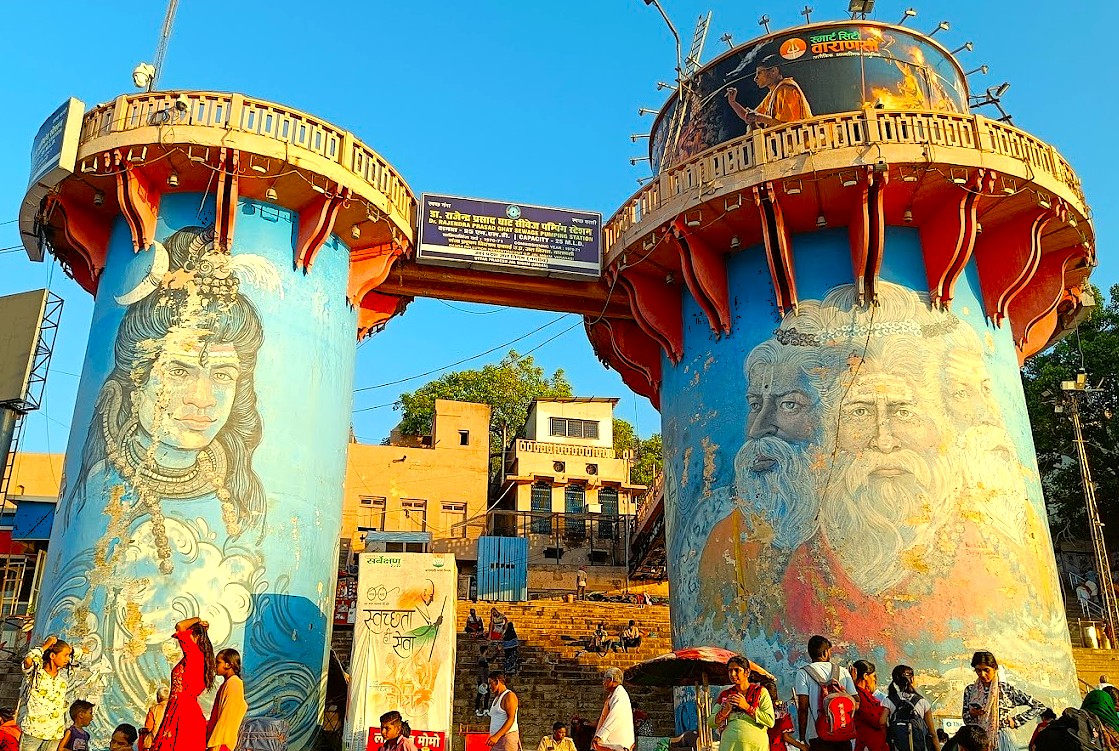
Exploring the areas surrounding Dasaswamedh Ghat Varanasi reveals small artisan workshops and stalls that are rich in tradition. As we navigate through the narrow alleys, handcrafted goods like Banarasi silk and pottery come into view, each piece telling a story of skill passed down through generations. Artists work diligently, tightly holding onto their cultural heritage while adapting to modern demands. These spontaneous encounters offer unique insights into the craftsmanship that characterizes Varanasi, allowing us to appreciate the hard work and creativity that underpin the local economy.
Ancient Technologies: Sacred Sound, Geometry & Astrological Influences
Dasaswamedh Ghat Varanasi. The design and layout of the Ghat incorporate elements of Vastu Shashra and sacred geometry and acoustic principles, specifically aimed at enhancing the spiritual experience. The steps leading to the river are constructed to resonate sound in a way that amplifies the chants during the evening aarti, creating an atmosphere rich in spiritual vibrations. Key materials used in construction include stone and wood, each chosen for their acoustic properties. As the priests chant, certain Solefeggio frequencies - like 528 Hz, known for promoting healing and transformation - are believed to resonate through the space, creating an immersive experience for attendees.
Resilience and Renewal: Overcoming Adversity’s Challenges
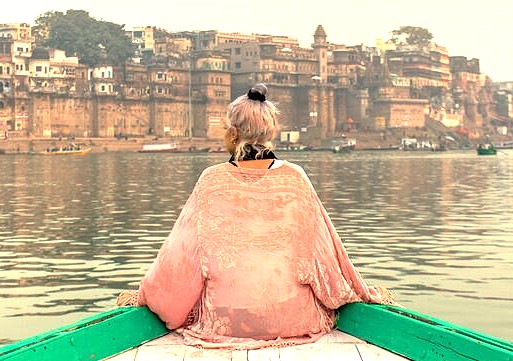
One event occurred in 1194 when Qutub-ud-din Aibak invaded Varanasi, leading to the destruction of many temples and shrines, including those at the ghat. Despite such destruction, the local community demonstrated exceptional resilience by beginning rebuilding efforts shortly afterward. By the late 18th century, under the guidance of the Maratha rulers, many sacred sites, including Dasaswamedh Ghat, were restored. This period of renewal highlighted the community's strong ties to their spiritual heritage and their determination to keep their traditions alive.
Urban Legends: Strange Sightings, Myths and Mysteries
The myths entwined with the Ghat add a unique dimension to its character. One popular local legend involves the appearance of a celestial light during the evening aarti, often described as the divine presence of the gods blessing the gathering. Another tale centers on Ganga Ma, who, according to lore, appears to those who show true devotion. Many locals claim to have experienced extraordinary phenomena during the evening rituals, enhancing the atmosphere of spirituality around the ghat.
Pack Your Spirit of Adventure - Our Adventure Begins Right Here
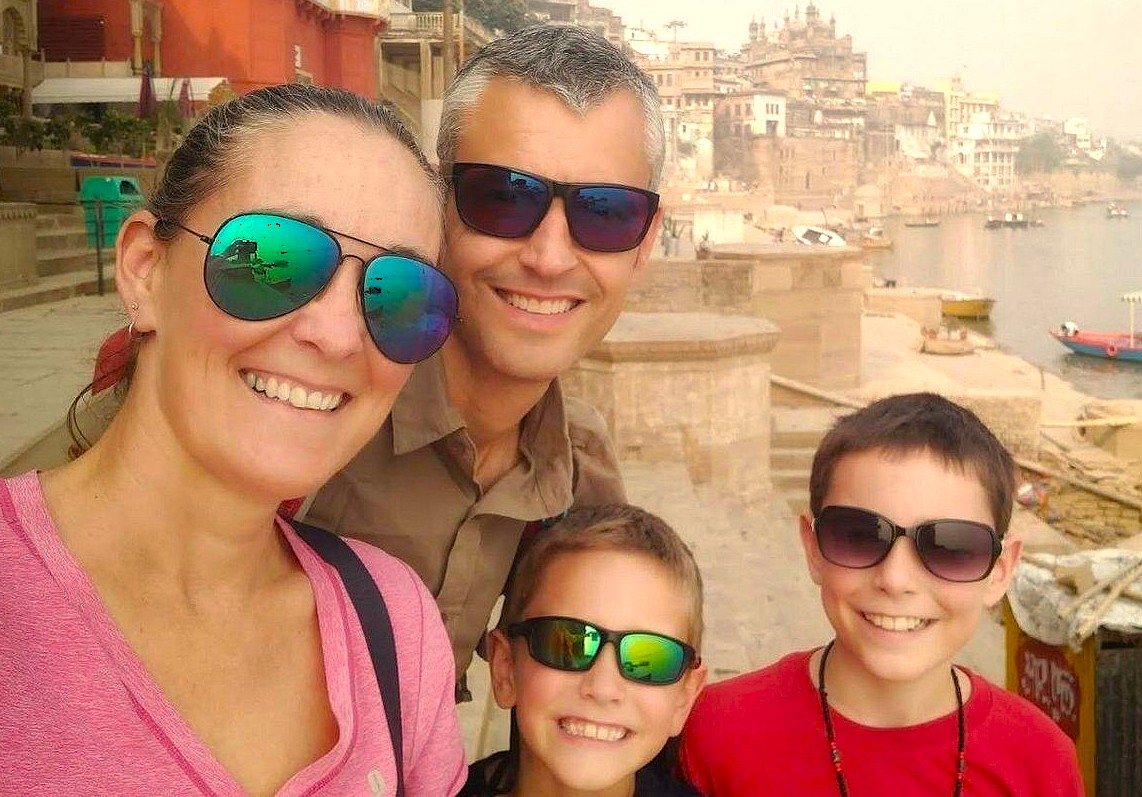
Our journey culminates in witnessing the mesmerizing Ganga Aarti, a spectacle of light, fire, and sound performed daily at dusk. We'll enjoy this profound ritual from the tranquil vantage point of a Shikara boat on the holy Ganges River. As priests perform the ancient ceremony, the rhythmic chants, the glow of countless oil lamps, and the collective spirit of the devotees create an atmosphere of intense spirituality. This combination of water, sound, and light transforms a simple visit into a deeply moving journey of discovery and devotion, connecting you to the soul of India. We eagerly anticipate sharing this incredible, unforgettable experience with you!
Symphony of Generosity: Offerings from Wanderers to Residents
Dasaswamedh Ghat Varanasi. The relationship between those who come to experience the ceremonies and the local community creates a beautiful dynamic. As we engage with local culture and traditions, we not only gain valuable insights into their way of life but also contribute to the economy and cultural exchange. Residents benefit from this interchange, gaining recognition for their crafts and hospitality. This community spirit fosters a shared sense of respect and admiration for the history and traditions that are alive at Dasaswamedh Ghat. T